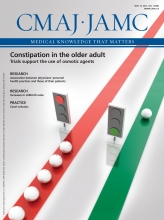It’s the cutting edge of technology — literally. Robotic surgery is an increasingly popular practice in hospitals across the globe, but not in Canada, where the hefty price tag may be deterring governments.
It is minimally invasive and can be better for patients and doctors, according to some experts. Others say the technology is too expensive, risky and impractical to be used regularly.
Robotic surgery is a bit of a misnomer, actually, because the devices have no autonomy. But the term is now widely used to describe laparoscopic surgery assisted by an electromechanical device that is operated by a surgeon through a console. Initially used mainly in urology, it is now used in general surgery, orthopedics, oncology and most other surgical disciplines.
The device provides a 3D image of the surgical site, and enhances a surgeon’s movements during procedures by calibrating for precision and correcting directional reversal. The major player in robotic surgery is the da Vinci Surgical System, made by Intuitive Surgical Inc. of Sunnyvale, California.
In the United States, 1370 hospitals have at least one of these surgical systems. But in Canada there are only about a dozen, all in big-city hospitals in places such as Toronto, Ontario; Montréal, Quebec; and Vancouver, British Columbia.
So why the disparity? The main prohibitive factor is cost.
Each system costs US$1.5 million–US$2.2 million. Surgeons must be specially trained and each procedure costs an additional US$2000 and takes 40–50 minutes longer to perform than a traditional technique.
Robot ethicist George Bekey says the cost of the machine prevents some hospitals from offering the technology, and because it’s not yet publicly funded in Canada, some patients may not be able to afford it. Companies now developing competing technologies could lower costs, but it will still be expensive, says the University of Southern California professor.

Robotic arms can be more precise than the hands of a surgeon, say proponents of robotic surgical systems.
Image courtesy of © 2013 Thinkstock
Canadian surgeon Dr. Rodney Breau says that “because it’s more expensive, I think the governments have waited for evidence before applying it in Canada and that’s not necessarily the wrong approach.” Breau, who uses the device at the Ottawa General Hospital, says Ottawa got its machine just last year, after $5 million was raised to buy the device, a warranty and equipment for 500 procedures. Each surgery uses several thousand dollars in nonreusable equipment and the arms of the robot must be replaced after every fourth surgery.
Ethicist Noel Sharkey suggests the cost of treatment is a “central issue” (Compute 2013;46:56–64). According to Sharkey, who is a professor of artificial intelligence and robotics at the University of Sheffield, United Kingdom, top hospitals in the US initially resisted purchasing the device, but gave in because it gave them a competitive edge.
Proponents of the system say it’s good for patients because the minimally invasive technique reduces blood loss, postsurgical scarring and the length of hospital stays. According to a paper released in March, hospital stays after device-assisted surgery were an average of 2.5 days shorter than traditional open surgeries in fields such as colorectal surgery, urology and oncology (Surg Clin North Am 2013;93:273–86).
The reported benefits of the device have some patients interested in the new technology, with entire websites dedicated to anecdotal evidence about the incredible experience of robot-assisted surgery. Breau says his patients were positive about the experience. Many are friends of former patients, and they came in knowing what they wanted.
“I’ve never had someone say, ‘I don’t like the idea of robotics,’” says Breau. “There’s more trouble convincing people not to get it done.”
But the machine’s glamorous promises could blind some patients to the surgical risks, states Sharkey’s paper. And the smiling doctors and earnest testimony about shorter and easier recovery aren’t enough to convince all potential patients.
When told she might need surgery for the chronic pain condition in her wrist, 20-year-old Brianne Crowder rejected the idea of the robotic console entirely. She says she finds the distance between surgeon and patient discouraging.
One of the recognized downsides to the device is the lack of tactile experience. Sitting with their faces buried in consoles 10 feet from operating tables, surgeons don’t have the same ability to feel the tissue as they would in an open surgery. Despite that, some doctors aren’t concerned.
“It’s not at all weird,” Breau says. “There’s no anxiety around not physically touching the patient.”
Sitting at a console and looking through binoculars or at screens with a 3D image actually feels more immersed in the procedure, says Breau. The console is also surprisingly user-friendly. “It’s incredibly intuitive,” he says, “I don’t think it took me longer than 20 minutes before I could use it to tie a knot.”
Though it may be easy to use for knot-tying, surgeons must be specially trained to operate with it, and there is still controversy over the extent of the learning curve. Studies cite anywhere from 18 to 250 procedures as the number necessary before a surgeon can be considered an expert at using the device.
In an attempt to provide training standardization, a 2012 study from the University of Texas tried to develop a comprehensive training program designed to make it easier to train surgeons based on a list of 23 deconstructed skills (Surgery 2012;152:477–88).
Despite the enhancements offered by the system, even proponents like Breau and Bekey acknowledge that it doesn’t guarantee results. An experienced surgeon like Breau working with the system “makes a wonderful team,” says Bekey.
“It has a lot more to do with the surgeon,” Breau says, “But it does make a good surgeon better.”











